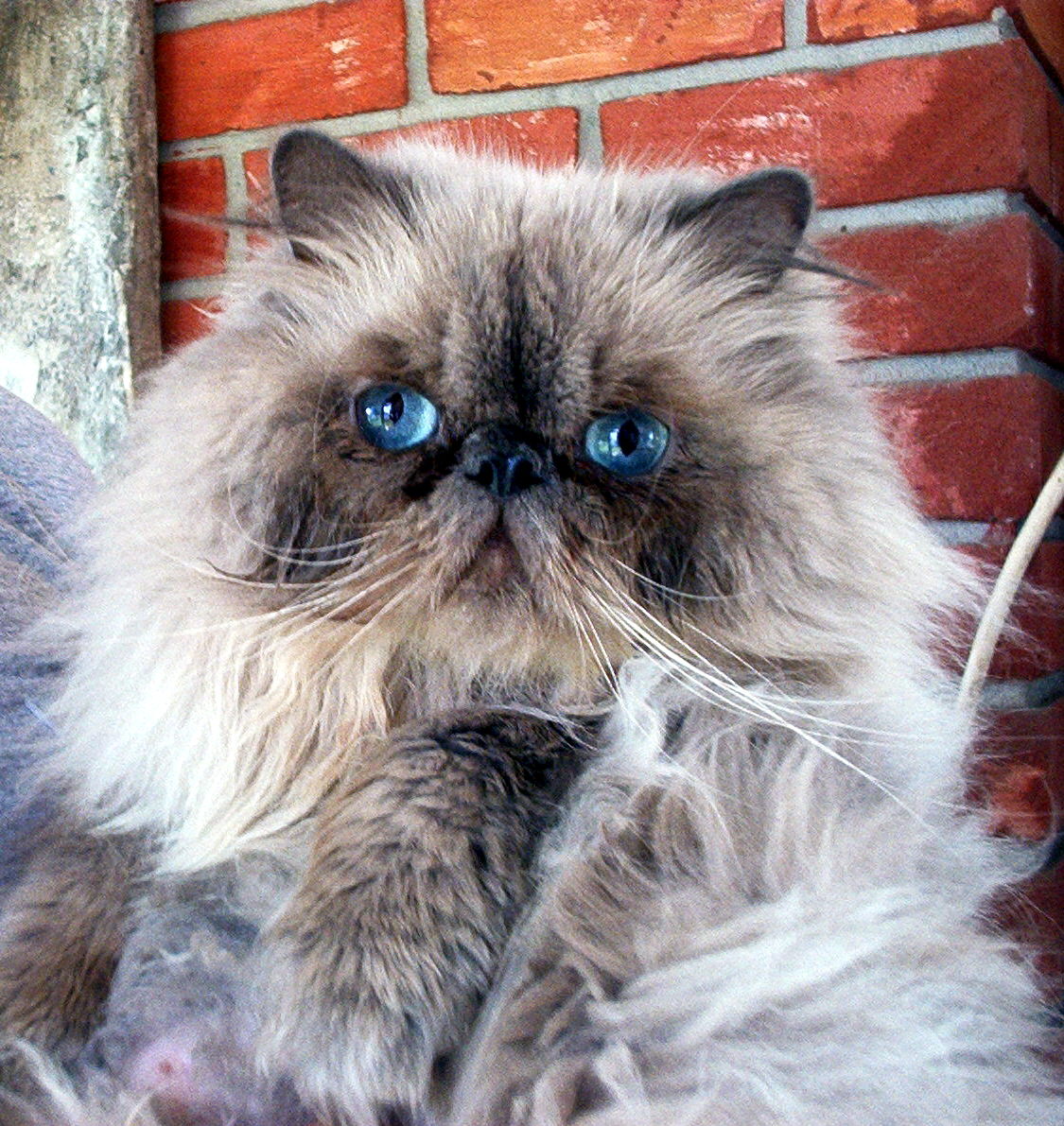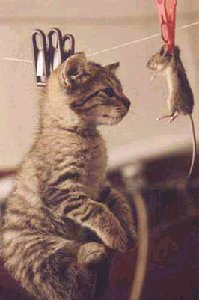Pet Care Tips tells
everything you should
know on a Cat's Eyes
|
|

Please Help Pets with a Small Gift of Only One Dollar
In a Cat's Eye
By: Alfred
Cat's eyes are probably the most expressive part of the cat.
They are also mesmerizing and there are superstitions about
cats being able to tell when you are lying or a person of
bad character. Because of this, it has even been suggested
that if a person doesn't like cats it is because the person
is untrustworthy and so feels uncomfortable with a cat's
fixed stare and wise looks.
A cat's pupils do not dilate independently like those of
some other animals. The cat's eyes dilate based on the
amount of light that is available. If your cat's eyes are
dilating independently it can be a sign of any number of
problems like:
- Inflammation of an eye
- Horner's Syndrome, a neurological disease
- FeLV
- Cancer
- Damage to the Central Nervous System
- The third eyelid
Cats have a third eyelid that is a nictitating membrane that
protects the eyes from becoming dry or damaged. When a cat
is ill the third eyelid may partially close and it is very
important that you take it to a veterinarian right away if
any other symptoms become apparent. However, a cat that is
very happy may also reveal the nictitating membranes.
A cat's eyes will change with its mood, so it is very
apparent when it is happy, sad or angry. A frightened cat
will have its pupils over-expanded to almost a circle and
its eyes open wide. An angry cat will have very narrowed
pupils and the eyelids will form narrow open slits.
All cats have elliptical pupils and round corneas with
almond shaped eyes. The dilation of the pupil is controlled
through two shutter-like ciliary muscles. A cat's eyes
function better in low light conditions and it has been
suggested that cats are really nocturnal animals. Cat's eyes
are relatively larger than a human's eyes. The lens of the
eye is more curved, suggesting that they have sharper focus
than humans.
The size of the anterior chamber of a cat's eye and the
cornea itself are greater in size relative to a human's eye
as well. This helps more light be refracted onto the retina.
Positioned at the back of a cat's eye is a tapetum lucidum
that acts like a mirror. This is what reflects light back at
you when you look at a cat that is caught in the beam of a
flashlight or headlight.
The reason that cats see better at night is because their
eyes contain a greater concentration of rods than in a
human's eye. This is what gives them the ability to have
great night time vision. They also have their receptor cells
lined up in a broad horizontal band so that they have the
ability to detect minute movements along the horizontal axis
and can see such movement at greater distances. This is, of
course, great for stalking prey.
Cats are subject to a lot of the same eye diseases as
humans, including glaucoma, pinkeye and cataracts. If your
cat contracts pinkeye it may be able to spread to you so
watch out and wash your hands frequently.
A cat's eyes are essential to its health and wellbeing.
Allowing an infection of any kind to linger can cause
irreversible eye damage and might well blind your cat. It is
important that if you notice any excessive weeping, red eyes
or any other symptoms that may suggest a problem with your
cat's eyes that you take it to the veterinarian as soon as
possible to correct the issue.
Talk about some Cat Eyes .... these baby blues from
Alfred's friend Frugleya, would make Bette Davis jealous.

Looking for a Quality Nutritional answer for a
finicky cat?
Cat doesn't like it's food? ......
Or, just plays with it?

Then we can Help your feline friend find what cats all
over America are Purring about!
You won't find a
Better Cat Food than This!
|